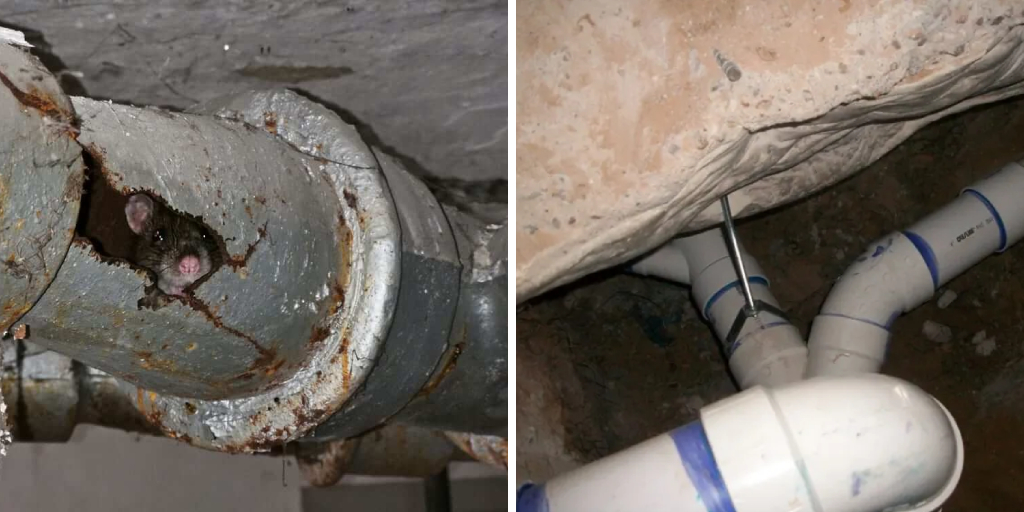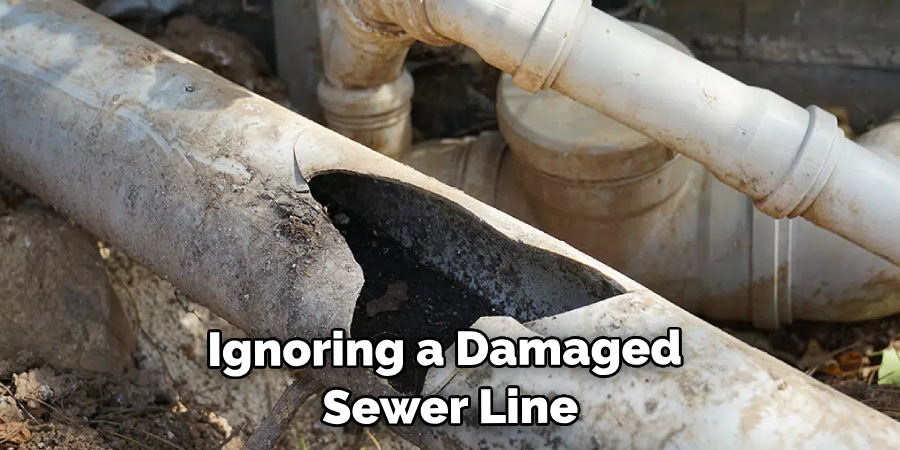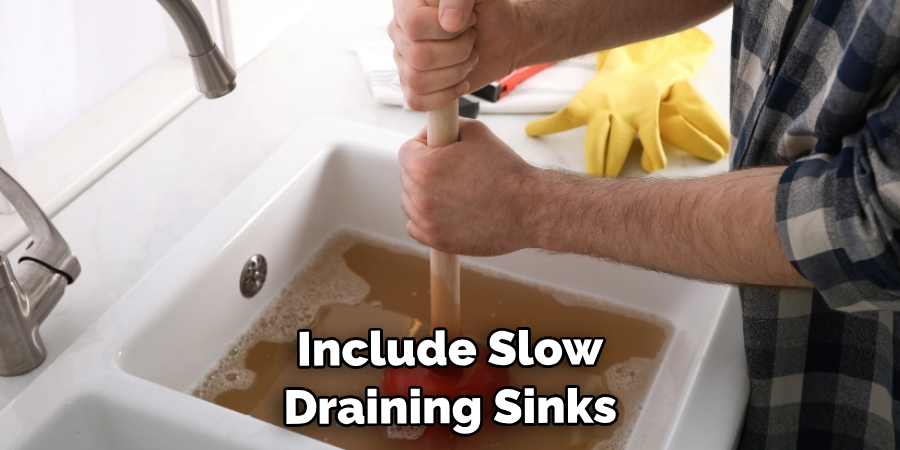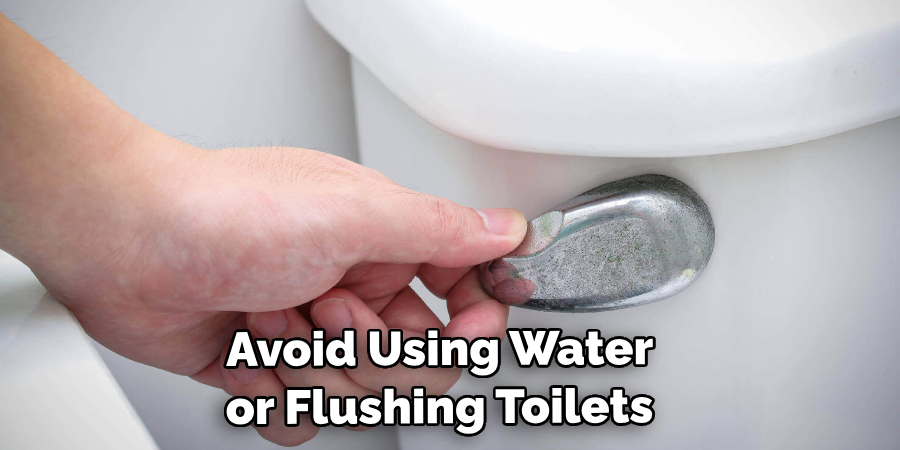Do you need to replace a sewer line under your house but don’t know how? Replacing a broken sewer line is an intimidating prospect and can be dangerous if done incorrectly, but with the right tools and knowledge it doesn’t have to be overwhelming.

Here, we provide step-by-step instructions on how to replace sewer line under the house so that you can get the job done safely and confidently. So even if you’ve never tackled plumbing projects before, let’s break it down together and make sure that your old sewage pipes are replaced successfully!
Why May You Want to Replace Sewer Line Under the House?
1 . To Fix a Clogged or Broken Sewer Line
A clogged or broken sewer line can cause numerous problems, including sewage backups, slow-draining sinks and toilets, and even foul odors. These issues not only create inconvenience but also pose health risks to you and your family. Therefore, replacing the sewer line under your house may be necessary to ensure proper functioning of your plumbing system and maintain a clean and safe home.
2. To Upgrade an Old or Outdated Sewer System
If your house is several decades old, chances are the sewer system may also be outdated. Older homes often have clay pipes, which are prone to cracking and collapsing over time. Replacing them with modern PVC pipes can improve the sewage flow and reduce the risk of future problems. Additionally, replacing an old or outdated sewer system can increase your property value and make it more attractive to potential buyers.
3. To Prevent Costly Repairs in the Future

Ignoring a damaged sewer line under your house can lead to even bigger problems down the road. As time passes, small issues can escalate into major ones, which may require extensive repairs or even a complete replacement of the system. This not only means more inconvenience for you but also involves hefty costs. By replacing the sewer line now, you can save yourself from potential headaches and expenses in the future.
4. To Comply with Local Regulations
In some areas, it may be mandatory to replace old or damaged sewer lines under houses to comply with local regulations. This is especially true if your home is connected to a public sewer system. Not complying with these regulations can result in fines and penalties, so it’s important to stay informed about the requirements in your area.
5. To Avoid Environmental Hazards
A broken or damaged sewer line under your house can leak sewage into the ground, causing environmental hazards. Sewage can contaminate groundwater and nearby bodies of water, posing a threat to both human health and the environment. By replacing the sewer line, you not only protect your own property but also contribute to maintaining a safe and healthy community.
How to Replace Sewer Line Under the House in 6 Easy Steps
Step 1: Identify the Problem
The first step in replacing a sewer line under your house is to identify the problem. Signs of a damaged or clogged sewer line include slow-draining sinks and toilets, gurgling sounds coming from pipes, and foul odors coming from drains. If you notice any of these warning signs, it’s time to inspect your sewer line.

Step 2: Gather Supplies
Before you begin the replacement process, make sure you have all the necessary supplies. This may include a shovel, pickaxe, pipe wrench, PVC pipes and fittings, and any other tools or materials specific to your home’s plumbing system.
Step 3: Locate Your Sewer Line
Next, you’ll need to locate your sewer line. This will likely be located near the foundation of your house, and you may need to dig around the area to expose it. Be sure to wear protective gear while doing this, as sewer lines can contain harmful bacteria.
Step 4: Remove Old Sewer Line
Once you’ve located the sewer line, use a pipe wrench to disconnect it from any attached pipes or fittings. You may need to use a pickaxe or shovel to break up any concrete, if necessary. Remove the old sewer line and dispose of it properly.
Step 5: Install New Sewer Line
Now it’s time to install the new sewer line. Start by connecting one end of the PVC pipe to your home’s plumbing system, using appropriate fittings as needed. Then, connect the other end of the pipe to your sewer line, again using fittings as necessary. Be sure to secure all connections tightly.
Step 6: Cover and Test
After installing the new sewer line, cover it back up with soil and compact it down firmly. Turn on your home’s water supply and flush toilets or run sinks to test the new sewer line for any leaks or issues. If everything checks out, you’ve successfully replaced your sewer line under the house!
Additional Tips and Considerations
1 . Choose the Right Materials
When replacing a sewer line under your house, it is important to choose the right materials. PVC pipes are often recommended as they are more durable and resistant to corrosion. It is also important to make sure that the pipes you choose meet local building codes.
2 . Consider Hiring a Professional
Replacing a sewer line under your house can be a complex and labor-intensive task. If you are not confident in your plumbing skills, it is best to hire a professional to ensure that the job is done correctly and safely.

3 . Plan for Potential Obstacles
Before starting on the project, make sure to plan for any potential obstacles that may arise during the replacement process. This can include tree roots or other underground structures that may be in the way. It is important to have a backup plan in case of any complications.
4 . Ensure Proper Ventilation
Proper ventilation is crucial when working on a sewer line replacement. Make sure that there is enough airflow in the area to prevent buildup of potentially harmful gases. Also, be sure to wear protective gear such as gloves and a mask when handling any sewage.
5 . Follow Local Regulations
Before starting any work on your sewer line, make sure to check with your local municipality for any regulations or permits that may be required. This can include obtaining a plumbing permit or adhering to specific building codes. Failure to do so could result in fines or other legal issues.
6 . Regular Maintenance is Key
Once your sewer line has been replaced, it is important to follow a regular maintenance schedule to ensure its longevity. This can include periodic inspections and cleanings to prevent buildup and potential clogs. It is also important to be mindful of what you are flushing down the toilet to avoid any future issues.
By following these additional tips and considerations, you can ensure a successful replacement of your sewer line under the house. Remember to always prioritize safety and consult a professional if needed. With proper planning and maintenance, your new sewer line should provide reliable service for years to come.
Frequently Asked Question
What Precautions Should I Take Before Replacing My Sewer Line Under the House?
Before replacing your sewer line under the house, it is important to take some precautions to ensure a smooth and safe process. Some of these precautions include: It is crucial to know the location of any underground utility lines before starting any digging or excavation work.

Contact your local utility company to have them mark the locations of any underground lines. This will help prevent accidents and damage during the replacement process. It is also important to wear protective gear, such as gloves and goggles, while working on the sewer line. Additionally, make sure to turn off all utilities connected to the sewer line before starting work.
How Do I Know If My Sewer Line Needs to be Replaced?
There are several signs that may indicate the need for a sewer line replacement. These include persistent clogs or backups in your plumbing system, foul smells coming from drains or toilets, and visible damage to your sewer line such as cracks or leaks. If you notice any of these signs, it is best to contact a professional plumber to assess the situation and determine if a replacement is necessary.
Can I Replace My Sewer Line Under the House Myself?
It is not recommended to replace your sewer line under the house on your own as it can be a complex and potentially dangerous process. It requires specialized tools and equipment, as well as knowledge and experience in plumbing and excavation work. It is best to hire a licensed plumber who has expertise in dealing with sewer line replacements.
How Long Does It Take to Replace a Sewer Line Under the House?
The time it takes to replace a sewer line under the house can vary depending on factors such as the length and depth of the line, any obstacles or obstructions, and the type of replacement being done. On average, it can take anywhere from 1-3 days for a professional plumber to complete the replacement process.
Will I Need to Leave My House During the Replacement Process?
In most cases, homeowners do not need to leave their house during the sewer line replacement process. However, it is important to follow any safety precautions given by the plumber and avoid using water or flushing toilets while work is being done on the sewer line. It may also be necessary to limit water usage during the replacement process, so it is important to plan accordingly.

Conclusion
In conclusion, it is important to understand that replacing a sewer line under a house can be a large job. However, with proper planning and equipment along with the right skillset and experience, it is definitely possible! It may take several days or weeks depending on the scope and complexity of the project, but with patience and attention to detail you will be well rewarded in the end.
Now you know how to replace sewer line under the house! If you have never attempted such an undertaking before, it might be wise to consult a professional who possesses both knowledge and experience. Alternatively, many projects supply kits specifically designed for this kind of project that help walk you through the process with ease. No matter what method you choose for your DIY plumbing repair journey, we wish you all the best of luck!

